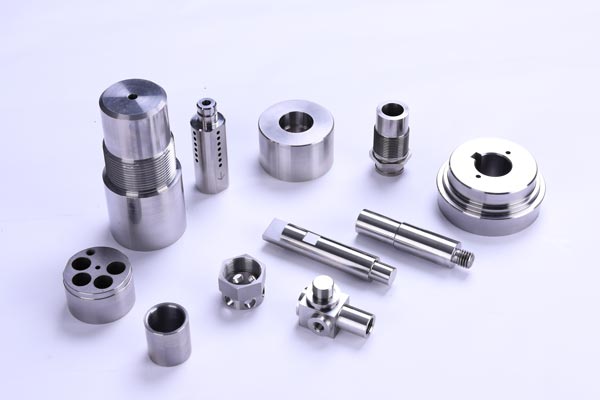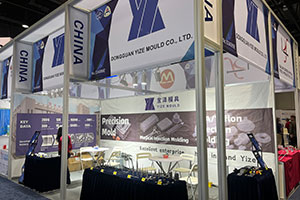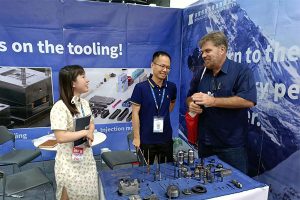Ways to Prolong the Service Life of Tungsten Carbide Dies in Harsh Environments
In the vast landscape of industrial production, tungsten carbide dies shine like bright stars, occupying a pivotal position in numerous fields thanks to their high hardness, excellent wear resistance, and […]
In the vast landscape of industrial production, tungsten carbide dies shine like bright stars, occupying a pivotal position in numerous fields thanks to their high hardness, excellent wear resistance, and outstanding corrosion resistance. However, when exposed to harsh environments such as high temperatures, high pressures, high humidity, and corrosive media, the service life of tungsten carbide dies is severely threatened, much like a candle in the wind. So, how can we safeguard the service life of tungsten carbide dies in harsh environments? This article will delve into effective strategies from multiple dimensions, including material selection, design optimization, processing technology, and usage and maintenance.
Material: Laying a Solid Foundation for Service Life
Select High-Performance Tungsten Carbide Materials
In harsh environments, choosing high-performance tungsten carbide materials is the cornerstone of extending the service life of dies. These materials are like armored warriors, possessing higher hardness, stronger wear resistance, and better corrosion resistance, enabling them to face the challenges of harsh environments with composure. At the same time, the purity and uniformity of the materials are akin to the inner qualities of warriors, having a profound impact on the service life of the dies. Therefore, it is essential to select reliable material suppliers to provide a solid guarantee for the service life of the dies.
Onze fabriek business: carbide onderdelen, schimmel onderdelen, medische spuitgietmatrijzen, precisie spuitgietmatrijzen, teflon PFA spuitgieten, PFA buismontage. e-mail: [email protected],whatsapp:+8613302615729.
Optimize Material Heat Treatment Processes
Reasonable heat treatment processes are like magical spells that can improve the microstructure and properties of tungsten carbide materials. Quenching treatment is like injecting a powerful force into the materials, enhancing their hardness and wear resistance; while tempering treatment is like a gentle caress, reducing the brittleness of the materials and improving their toughness and fatigue resistance. During the heat treatment process, it is necessary to strictly control parameters such as temperature, time, and cooling media, just as a rigorous scientist would, to ensure the stability and consistency of the material properties.
Design: Carving Out Durability
Optimize Die Structure
Die design is like building a sturdy castle, and it is crucial to fully consider the influence of harsh environments. Increasing the stiffness and strength of the die is like reinforcing the castle walls, reducing stress concentration; adopting reasonable fillet, transition, and chamfer designs is like adding soft curves to the corners of the castle, reducing stress concentration and wear; optimizing the die’s cooling system is like installing efficient ventilation equipment in the castle, reducing the temperature gradient of the die and minimizing thermal stress. Through these structural optimization measures, the strength and durability of the die will be significantly improved, and its service life will be extended.
Implement Surface Treatment
Surface treatment is like putting on a sturdy “protective suit” for tungsten carbide dies. Surface treatment technologies such as carburizing, nitriding, and coating can form a dense protective film on the die surface, effectively blocking the erosion of corrosive media, much like building an invisible barrier around the castle. At the same time, surface treatment can also improve the hardness and wear resistance of the die, making it more resilient in harsh environments and extending its service life.

Processing Technology: Creating Precise Quality
Strictly Control Processing Accuracy
In the processing of tungsten carbide dies, processing accuracy is the key factor determining the die quality. Insufficient processing accuracy will cause the die to generate excessive stress and deformation during use, just like an unbalanced scale, seriously affecting its service life. Therefore, it is necessary to select high-precision processing equipment and tools and strictly follow the processing procedure regulations to ensure that the dimensional accuracy and shape accuracy of the die meet perfect standards.
Optimize Processing Parameters
The selection of processing parameters is like conducting a precise symphony, having an important impact on the performance and service life of tungsten carbide dies. In harsh environments, it is necessary to carefully select appropriate cutting speeds, feed rates, and cutting depths, just like adjusting the pitch and rhythm of musical instruments, to reduce cutting forces and cutting heat and minimize the wear and deformation of the die. At the same time, it is also necessary to flexibly adjust the parameters according to the specific processing situation to achieve the best processing effect.
Usage and Maintenance: Nurturing Long-Term Companionship
Use Dies Reasonably
Using tungsten carbide dies correctly is the basic principle for extending their service life. During use, it is necessary to avoid overloading the die, just like avoiding overworking a horse; avoid applying excessive impact or friction forces on the die surface, just like avoiding scratching precious items with sharp objects; regularly inspect and maintain the die, just like regularly maintaining a car, to promptly discover and solve potential problems and reduce the wear and damage of the die.
Conduct Regular Maintenance
Regular maintenance is the “elixir of life” for extending the service life of tungsten carbide dies. Maintenance includes cleaning, inspection, lubrication, and replacement of wearing parts. During cleaning, appropriate cleaning agents and tools should be used to thoroughly remove oil stains, rust, and chips on the die surface, just like giving the die a thorough cleaning; during inspection, the dimensional accuracy, shape accuracy, and surface quality of the die should be carefully checked, just like a doctor conducting a comprehensive physical examination for a patient; during lubrication, appropriate lubricants should be used to ensure the flexibility and wear resistance of the moving parts of the die, just like applying lubricating oil to the joints of a machine; when replacing wearing parts, high-quality spare parts that match the original parts should be selected, just like replacing healthy organs for the body. Through regular maintenance, potential problems of the die can be promptly discovered and dealt with, keeping the die in good operating condition.
Store and Preserve Properly
Proper storage and preservation are important links in maintaining the good condition of tungsten carbide dies. When storing and preserving the dies, it is necessary to avoid the adverse effects of humidity, corrosion, and high temperature, placing the dies in a dry, well-ventilated, and temperature-appropriate environment, just like providing suitable preservation conditions for precious cultural relics; avoid contact with corrosive substances, just like avoiding exposing flowers to toxic chemicals; regularly conduct anti-rust treatment on the dies, just like applying anti-rust paint on metal items. Through proper storage and preservation, the good condition of the die can be maintained, and its service life can be extended.
Extending the service life of tungsten carbide dies in harsh environments is a comprehensive “protracted war” that requires coordinated efforts from multiple aspects, including material selection and optimization, design optimization, processing technology optimization, and usage and maintenance. Through the implementation of these comprehensive measures, tungsten carbide dies will be like seasoned warriors, demonstrating strong vitality and excellent performance in harsh environments, providing strong support for the efficient operation of industrial production.






